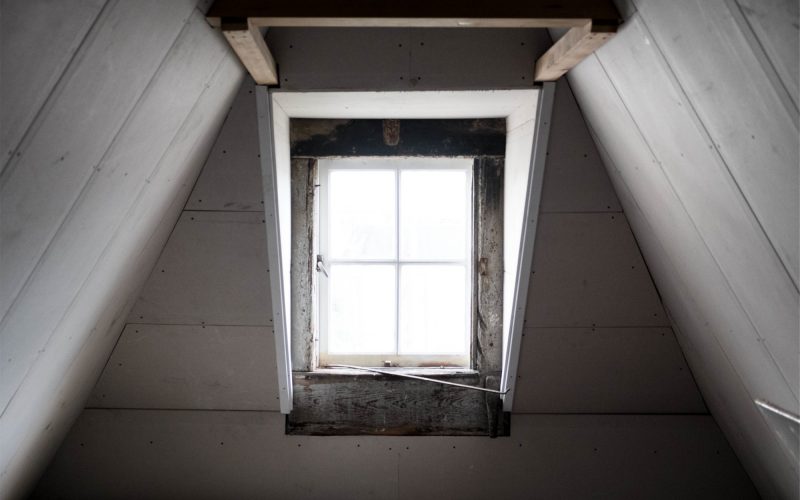
Everything Homeowners Need to Know About the Stack Effect
A third of American households struggle to pay off high energy bills. If you want to lower these expenses, energy conservation is a great place to start. But it can only do so much if your home suffers from the stack effect.
The stack effect is a major cause of energy inefficiency in homes with high ceilings or multiple floors. Crawl spaces in bad condition worsen its impact. And if it’s bad enough, allergens and mold in your crawl space will infiltrate your home.
Does your heater or air conditioner struggle to keep your home comfortable? It could result from the stack effect. If you believe you’re affected, read on for a proper diagnosis and preventative measures.
1. UNDERSTANDING THE STACK EFFECT
From windows to chimneys to crawl spaces, the fact of the matter is no home is a closed system. Outside air can slip in through these access points and change the internal air temperature.
When things get too cold, you adjust the thermostat to compensate and kick on the heater. This will lead to the unwanted stack effect.
Keeping in mind that hot air rises, it will travel to the upper levels of your home and escape through gaps in the attic, windows, or floorboards. The absence of this upward air creates a vacuum in its wake, pulling in heavier, colder air through the leaks in your crawl space and ground-level windows.
As long as you continue to change the temperature in your home, this cycle of air will continue. And it’s not just something that happens during the wintertime.
Let’s say you’re running the HVAC in the middle of July. As the air drops in temperature, it also becomes heavier and sinks to the bottom of your home, seeking an avenue of escape. When the cold air leaves through the crawl space, a vacuum in the upper regions of your house will then pull hot air through the attic and windows.
In short, you can experience a stack effect during any season. The direction of the airflow is the only thing that changes depending on the time of year.
2. CONSEQUENCES OF THE STACK EFFECT
If left unchecked, the stack effect will make it impossible to regulate the temperature in your home. This means you’ll spend plenty of time fiddling with the thermostat to no avail.
As your heater or air conditioner works overtime, it will perpetuate the airflow without drastically improving the home’s internal temperature. This can lead to significant increases in your overall energy bill. By running your temperature-control devices more often than necessary, they’ll also accrue additional wear and tear.
Worst of all, the stack effect is a serious health concern. During winter, outside air travels first through your home’s crawl space and then into the rest of your home.
And your crawl space isn’t the most sanitary part of the home. It’s a nesting ground of microbes and allergens, which will then ride the air currents into the living areas of the household.
Mold spores can then deposit themselves in moist areas around your home, such as the kitchen and bathroom, leading to mold growths. According to the Centers for Disease Control, mold spores can cause fungal infections, especially in those with suppressed immune systems or a history of lung problems.
While not an ideal solution, a crawl space cleaning can help reduce the allergens and spores that enter your home.
3. STACK EFFECT PREVENTION
If you believe your home is a victim of stack effect ventilation, there are some simple ways to combat it. By sealing cracks in your home, warm air will never escape and create a vacuum.
Performing an energy audit is a great way to locate problem areas, but you can check for some of the offenders on your own. Let’s look at common sources of indoor air leaks.
SEAL THE ATTIC
Your attic takes a beating from inclement weather. It’s also not an area you likely keep your eyes on very often, which means problems can spring up without you knowing.
In the attic, look for cracks along the joints, wires, plumbing. When you find an open space, seal it with caulk. You must use a foam solution to plug some larger holes.
Insulation can play an important role in keeping indoor air. If you believe your attic is lacking insulation or needs more, it may be in your best interest to make a change.
EXAMINE THE WINDOWS
Windows and doors on any level of your home are some of the most common culprits of leaks. Checking the windows requires you to examine both the indoor and outdoor portions of the frame. You’re looking for old caulking or joints where the wood connects without sealant.
But some leaks are hidden deeper in the window frame and invisible to the naked eye. For an old, low-tech test, pull out a wispy stick of incense and close all the doors and windows. Disable any temperature-changing appliances, then turn on an exhaust fan or two.
This replicates the stack effect. By holding the incense stick near windows and doors, the smoke will waft inward, pushed along by the air coming into your home through hidden cracks.
SEAL YOUR CRAWL SPACE
The crawl space is the worst offender in the stack effect chain. Cracks in the foundation can be difficult for homeowners to uncover. Not to mention, they don’t have the tools or experience needed to make the repair.
If you believe the stack effect is occurring in your home, it’s time to call the crawl space professionals. We’ll repair your home’s damaged foundation and help you breathe easier. Request a free estimate today.
